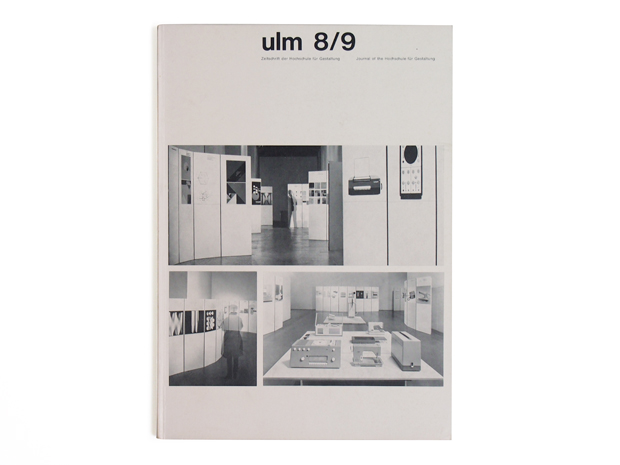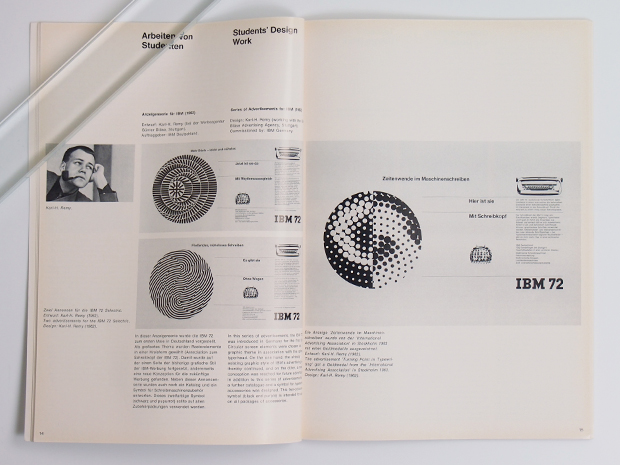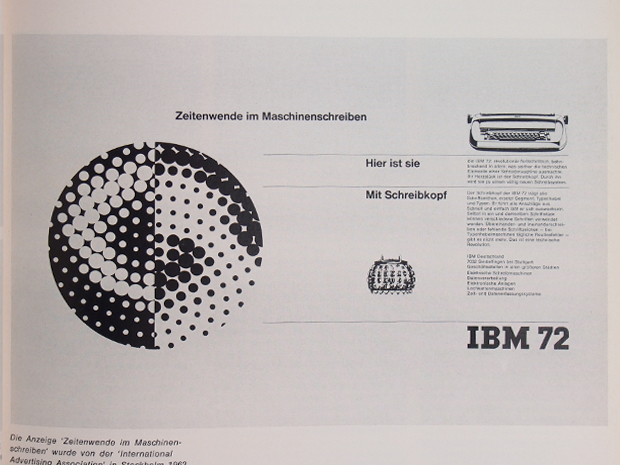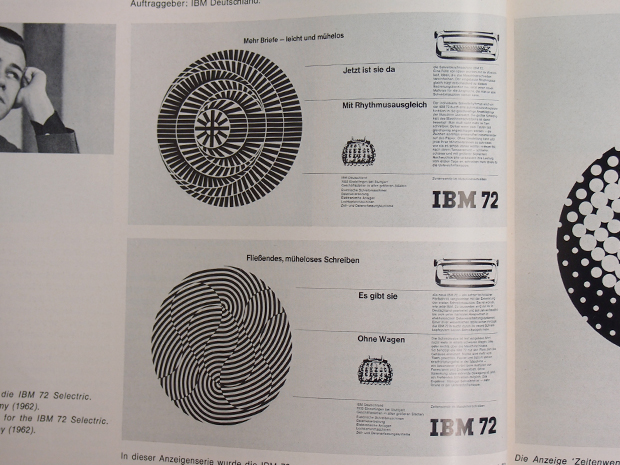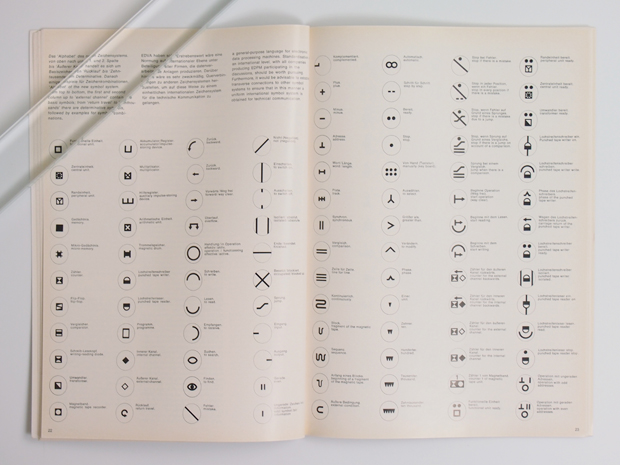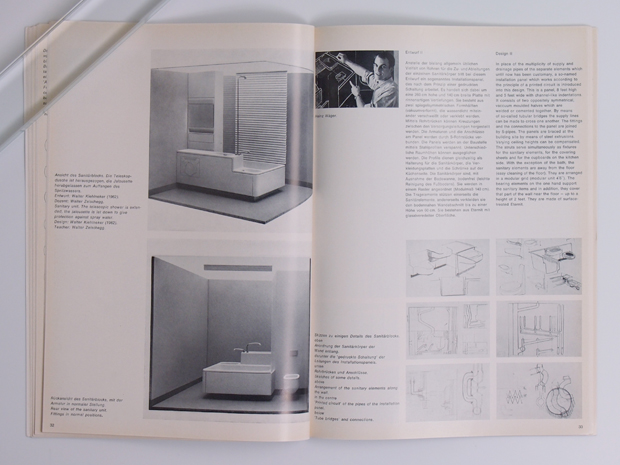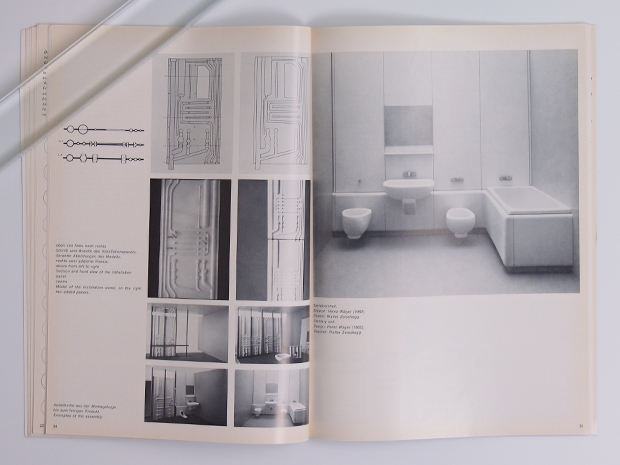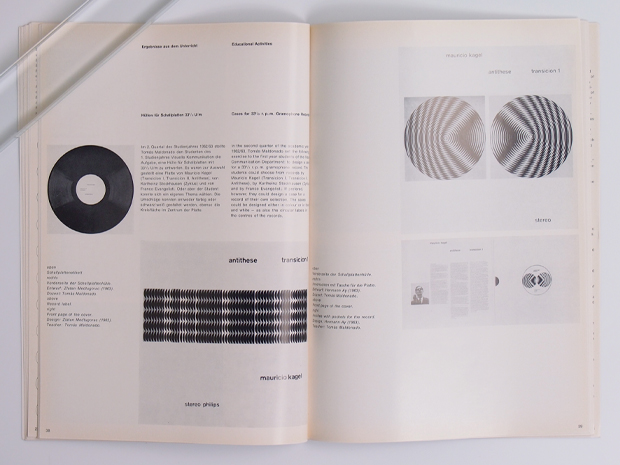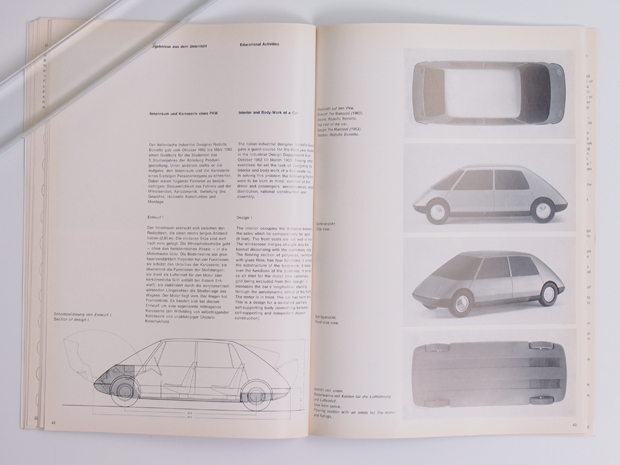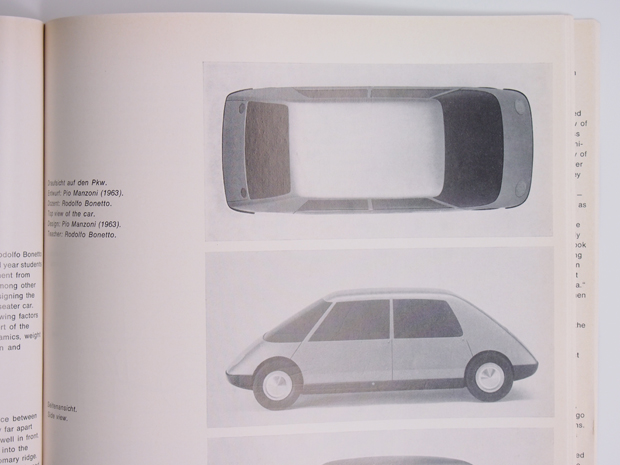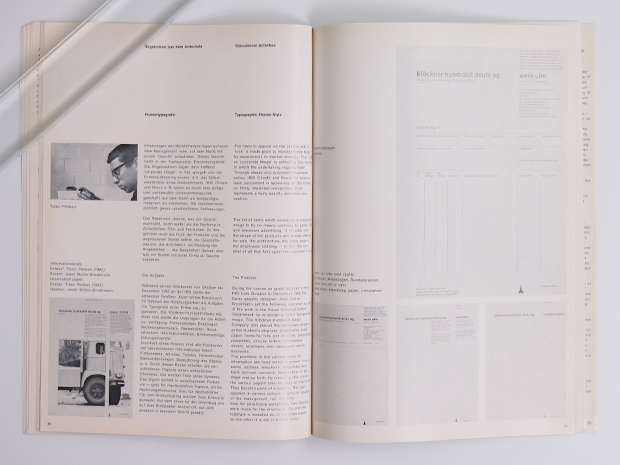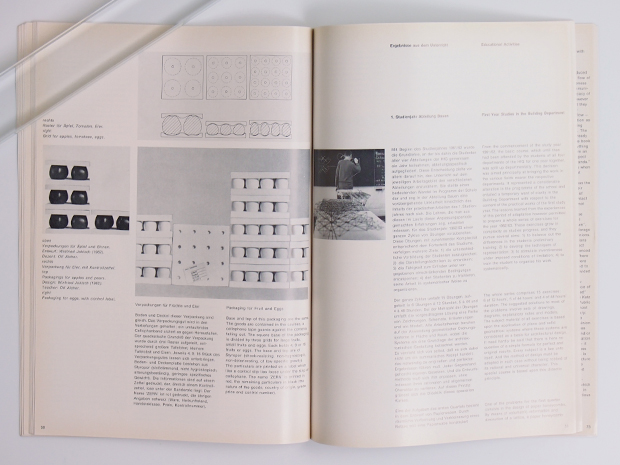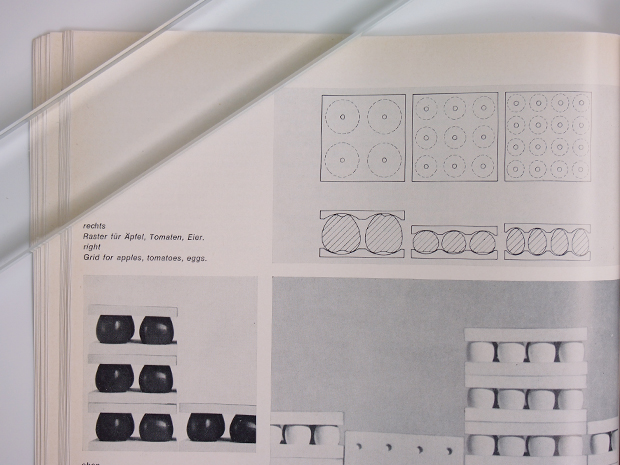Table of Contents
2
Exhibition of the HfG
5
Opinions:
Tomas Maldonado / Is the Bauhaus Relevant Today?
14
Student’s Designwork
Series od Advertisements for IBM
16
Teacher’s Designwork
System for Petrol Filling Stations
Symbol system for Elektronic Data
Processing Machines
Colorthek
Office Duplicating Machine
28
Educational Activities:
Domestic Sanitary Installations
Cases for Gramophone Records
Interio and Body-Work of a Car
Typographic House Style
Packaging
First Year Studies in the Building Department
55
Former Students:
H.G Gonrad
Claus Wille
62
Tendencies:
Josef Albers ? Interaction of Color
69
Comments:
Jargantua
Opinion Leaders and Followers
Architecture without Tears
Art of another Order
79
People and Events
81
In Ulm
83
About Ulm
The Ulm School of Design (Hochschule für Gestaltung) was a college of design based in Ulm, Germany.
Founded in 1953 by Inge Aicher-Scholl, Otl Aicher and Max Bill, the latter being first Rector of the school and a former student at the Bauhaus. The HfG quickly gained international recognition and is now viewed as being second only to the Bauhaus as the most influential school of design. During its operation from 1953–1968, new approaches to the design process were implemented within the departments of Product Design, Visual Communication, Industrialized Building, Information and Filmmaking.
The HfG building was designed by Max Bill and remains intact today as a historically important and functional building under the auspices of Foundation Ulm. The HfG was one of the most progressive educational institutions of design in the decades of the 50s and 60s and a pioneer in the study of semiotics.
The history of HfG evolved through innovation and change, in line with their own self-image of the school as an experimental institution. This resulted in numerous changes in the content, organization of classes and continuing internal conflicts that influenced the final decision of closing the HfG in 1968.[1] Although the school ceased operation after fifteen years, the ′Ulm Model′ continues to have a major influence on international design education.
ウルム造形大学(Hochschule fur gestaltung ulm)1953-1968年
旧西ドイツのウルムにオトル・アイヒャー、マックス・ビルらが設立した造形大学。
バウハウス出身のマックス・ビルが初代校長となり、 バウハウスの理念を継承し、機能主義的な造形を基本とした。 プロダクト・デザイン、建築、ヴィジュアル・コミュニケーション、インフォメーション、映画制作部門の5つの学科から構成されていた。
オトル・アイヒャーらがヴィジュアル・コミュニケーションという概念を唱え、その確立に努めた。
同大学は1968年には閉鎖され、その活動は僅か15年間であったが、その理論と実践を通じて、20世紀後半初期の世界のデザイン界に主導的な役割を果たした。
